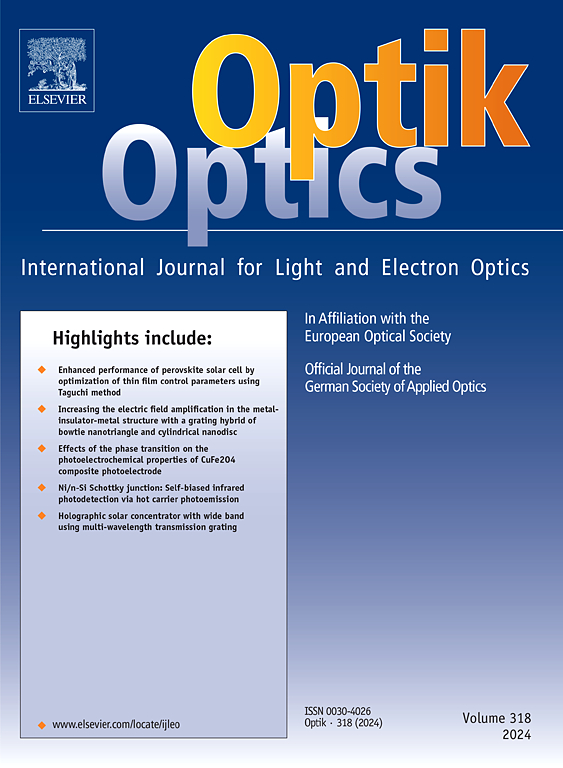光学检测水中金属离子的食用明胶基纯溶胶
IF 3.1
3区 物理与天体物理
Q2 Engineering
引用次数: 0
摘要
水中高浓度金属化合物对人类健康和水生生态系统构成严重威胁,已成为当今社会的全球性环境问题。本研究提出了一种利用商业食用明胶作为分子探针检测Fe3+、Sn2+和Cr6+离子的简单方法。基于吸光度和发光的光学响应,环保型无标签方法的检出限分别为0.81 µM/1.7 µM、2.39 µM/3.19 µM和0.84 µM。金属结合性能被解释为明胶分子链上的官能团与金属离子的物理化学性质之间的协同作用。竞争吸光度测量,使用双组分水样,进行了深入了解的控制因素,影响盛行的金属亲和的明胶在复杂的水基质。除了环保和可持续的特性外,制备明胶基水溶胶的简易性使其成为一种潜在的生物材料,可用于金属离子传感。本文章由计算机程序翻译,如有差异,请以英文原文为准。
Edible gelatin-based hydrosol for optical detection of metal ions in water
High concentration of metallic compounds in water poses a serious threat to human health and aquatic ecosystems becoming a global environmental issue in present society. This study presents a simple method for detecting Fe3+, Sn2+, and Cr6+ ions using commercial edible gelatin as a molecular probe. Based on the absorbance- and luminescence-based optical response, the eco-friendly label-free method demonstrated the detection limits of 0.81 µM/1.7 µM, 2.39 µM/3.19 µM and 0.84 µM. Metal-binding properties are explained as the synergistic effect between the functional groups on the gelatin molecule chain and the physicochemical properties of the metal ion. Competitive absorbance measurements, using a bi-component water sample, were performed to gain insights into the governing factors that influence the prevailing metal affinity of gelatin in complex water matrices. Apart from environmentally friendly and sustainable attributes, the ease and simplicity of preparing the gelatin-based hydrosols make them a potential biomaterial for real applications in metal ion sensing.
求助全文
通过发布文献求助,成功后即可免费获取论文全文。
去求助
来源期刊

Optik
物理-光学
CiteScore
6.90
自引率
12.90%
发文量
1471
审稿时长
46 days
期刊介绍:
Optik publishes articles on all subjects related to light and electron optics and offers a survey on the state of research and technical development within the following fields:
Optics:
-Optics design, geometrical and beam optics, wave optics-
Optical and micro-optical components, diffractive optics, devices and systems-
Photoelectric and optoelectronic devices-
Optical properties of materials, nonlinear optics, wave propagation and transmission in homogeneous and inhomogeneous materials-
Information optics, image formation and processing, holographic techniques, microscopes and spectrometer techniques, and image analysis-
Optical testing and measuring techniques-
Optical communication and computing-
Physiological optics-
As well as other related topics.
 求助内容:
求助内容: 应助结果提醒方式:
应助结果提醒方式:


